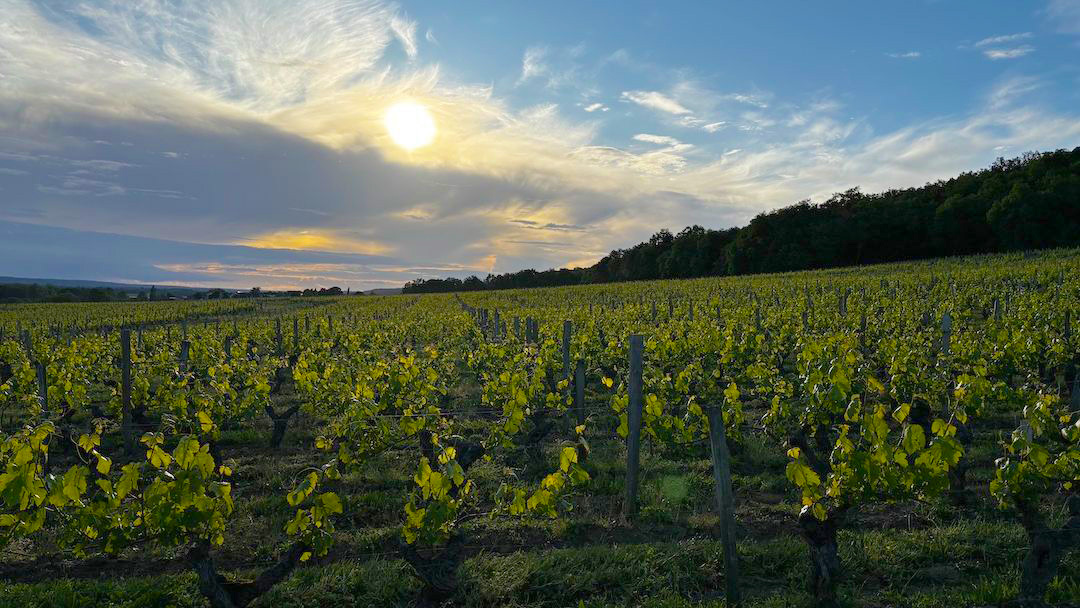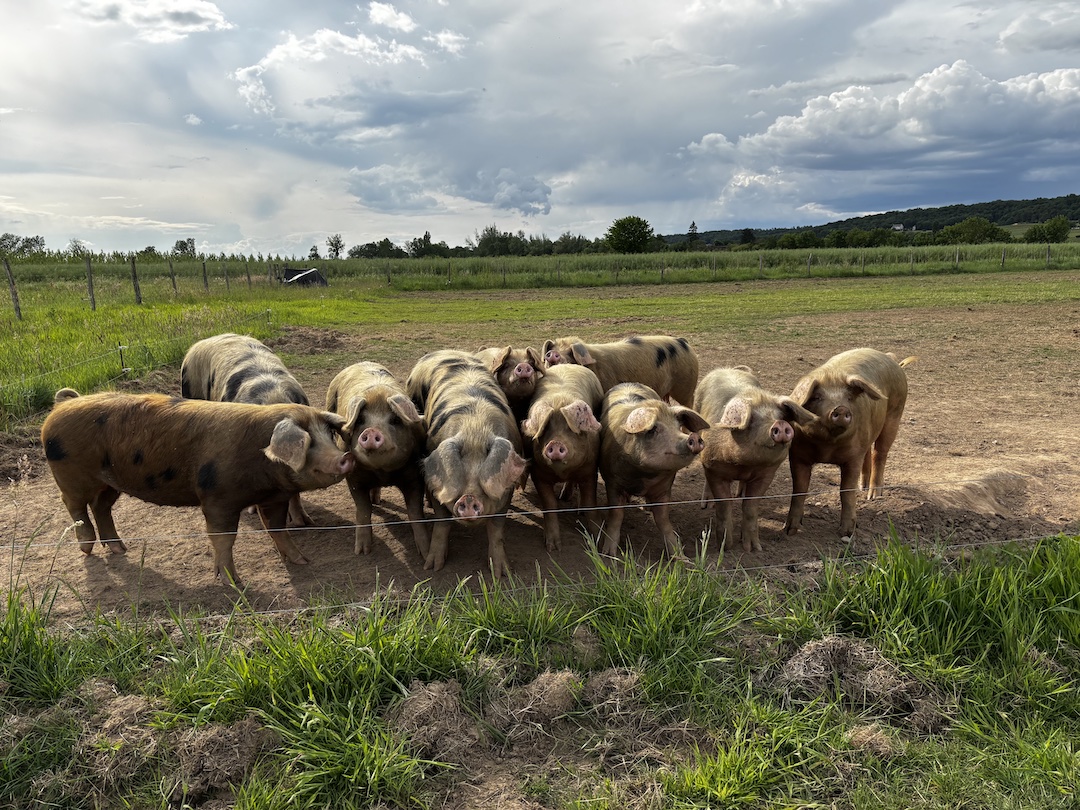Browse using the new Vinous website now. Launch →
Printed by, and for the sole use of . All rights reserved © 2015 Vinous Media
The Mighty Ducks: 2023 Loire Valley Reds
BY REBECCA GIBB MW | AUGUST 19, 2025
Loire Valley red wine producers have been the ultimate underdog team in recent vintages. Remember The Mighty Ducks (1992) on skates, but swap ice hockey for grape growing. It’s been a gruelling few seasons: full of game-ending frosts, heatwaves as relentless as power plays, droughts providing body checks, and humidity mimicking unpredictable rebounds. These growers had every reason to throw their secateurs down and quit, but much like Coach Bombay’s squad, they kept their heads down and doggedly fought on.
The perfect season isn’t always necessary to achieve good results. The 2023 vintage exemplifies that. It’s a vintage where the wines are lighter on their feet and will be ready to drink sooner than the powerful, drought-affected 2022s. Though producers may have already sold through their 2022s, many are praying that drinkers will consume the newly released 2023s, choosing to lay the 2022s down while their rich structure and dense concentration take a timeout.
 Late-afternoon sun over the hallowed slopes of Chinon.
Late-afternoon sun over the hallowed slopes of Chinon.
The 2023 growing season started well, without damaging frosts, offering the prospect of an abundant year. But warmth and humidity from the second week of June onwards added up to the perfect storm for mildew, which made the going particularly tough for organic growers. Some admitted that they sprayed an unprecedented number of times to avert disaster. It’s likely that some fruit went to the winery carrying traces of sulfur sprays, as whiffs of reduction in the resulting wines seem to be more common in 2023 than in previous vintages. While it wasn’t a particularly hot and sunny year like 2018 or 2022, temperatures in 2023 were above the long-term average—but that came with dampness.
As harvest approached, rainfall bloated grapes, diluting concentration, acidity and sugar levels. The lower skin-to-juice ratio yielded paler-hued wines with lower tannin levels and less concentration of flavor. Weather conditions also ushered in the appearance of the Drosophilia suzukii, otherwise known as the Suzuki fruit fly, which can lead to volatile acidity in the grapes and wines. The scent of vinegar permeated the air around vineyards as the 2023 harvest loomed. These fruit flies penetrate the skin of the berries and lay eggs, which can hatch and eat the grape from the inside, or they can enter via damaged skin or split berries. The easiest way to identify this issue is the sour smell of acetic acid; it also turns the fruit shades of brown, orange and purple and causes the pulp to liquify.

The newly renovated chalky cellar at Domaine des Closiers, one of Saumur-Champigny's rising stars.
The key to success in 2023 was rigor. Rigor in the vineyard and rigor in the winery. If you wanted to make quality wine, your team had to be in the vineyard all the time, spraying to stop the spread of disease, green-harvesting, rejecting fruit both before and during harvest, sorting before that fruit went into the winery and checking the juice quality. Louis Germain of Domaine des Roches Neuves in Saumur reflected, “It was a nightmare, particularly for those in the fields. Morale was low with all the rain.” But tris (harvest passes) were key. Tris is a word that is often repeated across the Loire when it comes to 2023, with small parcels picked two or three times simply to make the best of what nature was—or wasn’t—providing. Yields were generous, and sacrificing quantity for quality was essential. As Clos Rougeard’s cellar master Cyril Chirouze said, “You had to let some passengers off.”
When it comes to tannins and extraction, the 2023s are a mixed bag. The healthy fruit was generally ripe, but the lack of substance meant there was little point in pushing for harder extractions when the raw material wasn’t there—and yet there is hardness in some wines. In lighter years such as 2023 and 2021, the wines can be described as Ligérien, a term that suggest wines that are classically Loire-like in style, with red fruit flavors, notes of Earl Grey tea and peppery spice, bright acidity and modest alcohol. Indeed, 12.5% alcohol levels are commonplace in 2023. Even at 12.5% on the label, chaptalisation was common. One producer recalls vinifying a first small pick and ending up with a 9.5% alcohol red. Inevitably, this producer waited for the next pick despite the risk of fungal disease. However, acidity levels aren’t quite the Ligérien levels of old, as many 2023s have higher pH levels and lower total acidities than usual. Even so, these young wines still feel tight and could do with another year in bottle to shake off their youthful angst, but most don’t have the concentration for longevity and will be early- to medium-term drinkers.

It's not just vines at Chinon's Domaine Grosbois.
A key to the stability of any wine is its pH. At a pH of 3, you’ve got a lot of acid and a lot of stability, but as a wine nudges towards a pH of 4, it becomes more and more prone to microbiological instability. Cabernet Franc is particularly susceptible to Brettanomyces. As a result, some producers erred on the safer side in 2023, using more sulfur dioxide—an antimicrobial—and filtering more stringently before bottling to prevent any nasty surprises from developing in bottle.
What won’t come as a surprise is that the region’s top tier producers defied all that was thrown at them and made some highly attractive wines. These wines may not have the weight or power of the 2022s, but in some sense that’s a relief. Wines in an earlier-drinking, lighter style remind us of the Loire’s geographical location: the north of France, whereas in hotter, drier vintages, Loire Cabernet Franc can seem more Mediterranean than Ligérien. There is certainly more variation in this vintage among the lesser producers and lesser sites. Numerous wines fail to impress, so choose carefully.

Clos Nouveau is the walled vineyard of Bourgueil's excellent Domaine du Bel Air.
It will be some years before the release of wines from top producers who employ lengthy barrel- and bottle-ageing regimes. Clos Rougeard’s latest allocation-only release is 2019, while Charles Joguet remains largely on 2021. That said, Domaines des Roches Neuves always releases promptly, embracing an ethos that says, “If it doesn’t taste good young, it won’t taste good at maturity.” While Roches Neuves’ 2023s are far leaner than their 2022s, the wines express joy in both their elegance and vibrancy.
After a season that felt like a nail-biting overtime, the Loire’s vintners should have been able to skate off the ice with a well-earned sigh of relief, but then came 2024, which made 2023 look like a winning season. But you’ll have to wait for Mighty Ducks meets Cabernet Franc part deux for that.
I tasted the wines for this report on a trip to the Loire Valley in spring 2025, with follow-up tastings at my home office in England.
© 2025, Vinous. No portion of this article may be copied, shared or redistributed without prior consent from Vinous. Doing so is not only a violation of our copyright but also threatens the survival of independent wine criticism.
You Might Also Enjoy
Loire Reds: Beyond the Unicorn, Rebecca Gibb MW, January 2024
Loire Chenin Blanc: Chaume the Way, Rebecca Gibb MW, July 2024
Loire Chenin: Dividing Lines, Rebecca Gibb MW, October 2023
Loire Cabernet Franc: Who Do You Think You Are?, Rebecca Gibb MW, August 2022
Cabernet Franc: The Dark Days Are Over, Rebecca Gibb MW, October 2021
Show all the wines (sorted by score)
- Antoine Sanzay
- Baudry-Dutour
- Charles Joguet
- Château de Coulaine
- Château de Targé
- Château de Villeneuve
- Château du Hureau
- Château du Petit Thouars
- Château Perray Jouannet
- Clos de l'Écotard
- Clos Rougeard
- Domaine Arnaud Lambert
- Domaine Aurélien Revillot
- Domaine Bernard Baudry
- Domaine Couly-Dutheil
- Domaine de la Butte
- Domaine de la Chapelle
- Domaine de la Chevalerie
- Domaine de la Commanderie
- Domaine de la Côterllaraie
- Domaine de la Haute Olive
- Domaine de la Marinière
- Domaine de la Noblaie
- Domaine de la Perrière
- Domaine de l'R
- Domaine de Noiré
- Domaine de Pallus
- Domaine des Closiers
- Domaine des Forges
- Domaine des Frères
- Domaine des Galuches
- Domaine des Rochelles
- Domaine des Roches Neuves
- Domaine des Sables Verts
- Domaine Dozon
- Domaine du Bel Air
- Domaine du Collier
- Domaine du Fossile
- Domaine du Petit Bondieu
- Domaine Grosbois
- Domaine la Bonneliere
- Domaine Lambert
- Domaine Moly
- Domaine Olga Raffault
- Domaine Yannick Amirault
- Grange de Saint-Saveur
- Haute de Perche
- Jean-Maurice Raffault
- La Peau de l'Ours
- Maison Audebert et Fils
- Pierre et Bertrand Couly
- Théo Blet
- Vignoble de RAB
- Wilfrid Rousse
